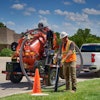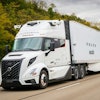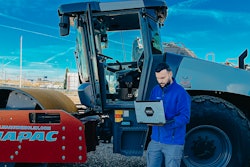
In the dynamic and ever-expanding realm of construction, the demand for skilled workers remains high. However, the industry faces a unique set of challenges when it comes to deploying these skilled professionals to far-flung jobsites. Particularly in sectors like manufacturing, data centers, and infrastructure projects, where specialized skills are crucial, the scarcity of skilled labor in remote or sparsely populated areas poses a significant hurdle. Here, we will delve into the difficulties contractors face in mobilizing skilled workers to such locations and explore how vehicle reimbursement programs emerge as a valuable solution.
The Challenge Of Remote Jobsites
Construction projects in remote areas often encounter difficulties in sourcing the right talent. This is exacerbated by the fact that skilled workers may be concentrated in urban centers, leaving jobsites in less populated regions with a shortage of qualified personnel. The need to transport skilled workers to these locations not only incurs additional costs but also poses logistical challenges for contractors.
Furthermore, the absence of a skilled labor pool in the immediate vicinity of a jobsite can lead to delays and increased project costs. This is especially true for projects in specialized sectors like manufacturing, data center construction, and infrastructure development, where the expertise of skilled workers is indispensable.
The Role Of Vehicle Reimbursement Programs
One solution to address the challenge of mobilizing skilled workers to remote jobsites is the implementation of vehicle reimbursement programs. These programs offer a practical and cost-effective way to ensure that skilled workers can reach their assigned locations without putting an additional burden on the construction company's resources.
If a construction company were, conversely, to mobilize a fleet of company cars or trucks, this could put a significant strain on the company’s resources. Getting workers into fleet vehicles means the upfront costs of purchasing a vehicle or at the very least the hassle of fleet leasing with a vendor. In addition, enabling personal vehicle usage reduces turnover and reconditioning time, mobilizing new hires and contract workers to hit the road faster and with ease.
While company fleets are sometimes necessary if companies require specialized vehicles (think, for example, of police cars, ambulances, or refrigerated trucks), all regular cars and light trucks can be served by an equal value vehicle reimbursement program.
How Vehicle Reimbursement Programs Work
Vehicle reimbursement programs operate by allowing construction workers to use their personal vehicles for business purposes, such as driving from a home office to remote jobsites. In the absence of a company-provided vehicle, this flexibility not only streamlines the hiring process but also empowers construction companies to tap into a wider talent pool without geographical constraints.
Moreover, vehicle reimbursement programs like FAVR allow companies not only to source talent in diverse locations, but also to reimburse at local rates. Fixed and Variable Rate (FAVR) programs factor local fuel, maintenance, insurance and other costs into rate calculations. This means that construction workers in more affordable locales are reimbursed at lower rates, protecting construction companies from the high (and inappropriate) costs of the IRS standard rate.
Benefits For Construction Companies
1. Cost-efficiency: By leveraging vehicle reimbursement programs, construction companies can eliminate the need to invest in and maintain a fleet of company vehicles. This results in significant cost savings on vehicle acquisition, maintenance, and insurance.
2. Flexibility in hiring: With the ability to tap into a broader geographical talent pool, contractors can recruit skilled workers from various locations, ensuring that projects are adequately staffed with the right expertise.
3. Enhanced recruitment: Offering vehicle reimbursement as part of the compensation package can make job opportunities more attractive to skilled workers. It demonstrates a commitment to their convenience and acknowledges the additional expenses they may incur while traveling for work.
Benefits For Construction Workers
1. Convenience: Skilled workers can use their personal vehicles, maintaining the comfort and familiarity of their own transportation. This can contribute to increased job satisfaction and work-life balance. Construction workers can select a vehicle of their choice, and its business use costs are covered by their employer.
2. Financial reimbursement: Knowing that they will be adequately reimbursed for the business use of their personal vehicle provides workers with financial peace of mind, alleviating concerns about the costs associated with commuting to remote jobsites. Indeed, workers without a reimbursement plan are forced to wait until tax time to reclaim their vehicle expenses. There is no obligation in the United States (except in Illinois, Massachusetts, and California) to reimburse for mileage, since employees can claim mileage on their taxes: therefore, reimbursement is generally perceived as a benefit by workers.
The challenge of mobilizing skilled construction workers to far-flung jobsites in sectors like manufacturing, data center construction, and infrastructure projects is a complex issue. However, vehicle reimbursement programs emerge as a practical solution that benefits both construction companies and workers alike. By embracing this innovative approach, the industry can bridge the gap between skilled workers and remote jobsites, ensuring the timely and successful completion of projects in diverse geographical locations.



















